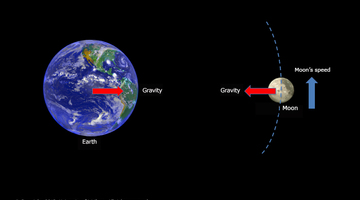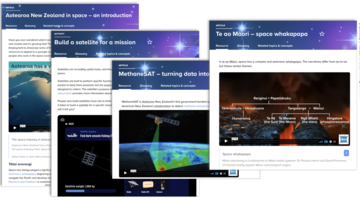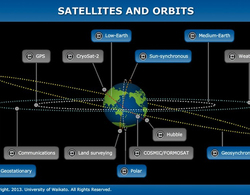

A satellite is anything that orbits around another object. Moons are natural satellites that orbit around planets, whereas artificial satellites are objects that people have made and launched ...
READ MORE

Position: Senior Lecturer, Department of Electrical and Computer Engineering, University of Canterbury. Field: System design, embedded systems, software engineering, Organisation: As a child, Dr ...
READ MORE

Position: Director, Gateway Antarctica, and Professor, School of Earth and Environment, University of Canterbury. Field: Glaciology and remote sensing Dr Wolfgang Rack, a senior lecturer and ...
READ MORE

Do you think that the space industry is limited to astronauts and billionaires? If so, you need to think again! You can have so many careers in aerospace. If you look at what most astronauts do ...
READ MORE

Space debris is leftover rocket parts and non-functional satellites and any other machinery or debris left by humans. Humans have been launching rockets into space since the 1950s, and now, 70 ...
READ MORE

In this activity, students use a simple true or false interactive tool to categorise facts. This activity could be used as a formative activity to gather students prior knowledge and ...
READ MORE

Search data from NASA’s Kepler spacecraft for the dips in star light intensity caused by exoplanets – planets that orbit stars other than the Sun. As these exoplanets pass between the star and ...
READ MORE

Help astronomers at Las Cumbres Observatory, California, study exoplanets – planets that orbit stars other than our Sun. Do this by interpreting images taken by their telescopes in Hawaii ...
READ MORE

Globe at Night is an international citizen science campaign to raise public awareness of the impact of light pollution by inviting citizen scientists to measure and submit their night sky ...
READ MORE

Although Aotearoa New Zealand is a relative newcomer to the international space industry, a deep knowledge of space enabled early Polynesians to navigate to these islands and develop mātauranga ...
READ MORE

Bring some awe into your classroom. The Science Learning Hub has developed a suite of resources designed to grow Aotearoa New Zealand students' interest in space. Join us to discover ways to ...
READ MORE

In this online PD session recorded on 2 June 2016, Andrea Soanes from the Science Learning Hub was joined by three guest presenters – all inspirational women working in STEM – who shared their ...
READ MORE
Space entrepreneur Mark Rocket says that the aerospace industry needs the full spectrum of people joining it. But what does it take to work in the sector? Watch as a few experts describe the ...
READ MORE
Dr Allan McInnes and Dr Adrian McDonald, from the University of Canterbury, explain how gravity and projectile motion keep natural and artificial satellites in an orbital path.
READ MORE
Dr Allan McInnes discusses his role in helping NASA design the Mars exploration rovers. He was responsible for ensuring all of the different parts fit together and did their jobs! Points of ...
READ MORE

The size, orbit and design of a satellite depend on its purpose. In this interactive, scientists discuss the functions of various satellites and orbits. Accompanying fact files provide ...
READ MORE

Choose a mission and then successfully build and launch a satellite that can help gather the data required. Select here for additional information on using this interactive simulation.
READ MORE

This slideshow, from the webinar Aotearoa in space, provides additional support for the video tutorial. Use the Slideshow menu for further options, including view full screen, and go here for the ...
READ MORE